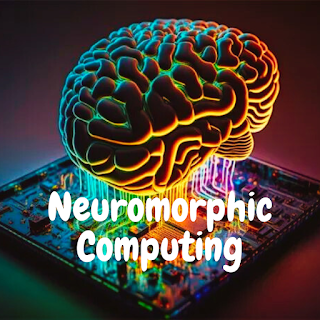As we step into an era where artificial intelligence (AI) and machine learning (ML) are revolutionizing every facet of our lives, from healthcare to transportation, the underlying technology powering these advancements is also undergoing a significant transformation. One of the most exciting and promising developments in this field is neuromorphic computing. This innovative approach aims to mimic the architecture and functioning of the human brain, offering unprecedented efficiency and capabilities. Let's delve into what neuromorphic computing is, its potential benefits, and its future implications.
What is Neuromorphic Computing?
Key Components of Neuromorphic Systems
- Neurons and Synapses: In neuromorphic chips, artificial neurons and synapses replicate the behavior of biological neurons and synapses. These components communicate through spikes or pulses, similar to how the brain processes information.
- Event-Driven Processing: Unlike traditional systems that process data continuously, neuromorphic systems are event-driven. They only consume power and process information when an event occurs, leading to significant energy efficiency.
- Parallel Processing:Neuromorphic systems can handle multiple processes simultaneously, much like the human brain. This parallelism allows for faster and more efficient computation, especially in tasks involving pattern recognition and sensory data processing.
The Potential Benefits
Neuromorphic computing offers several advantages over conventional computing approaches:- Energy Efficiency: One of the most significant benefits is the potential for drastically reduced power consumption. Neuromorphic systems consume power only when processing events, making them ideal for battery-powered devices and large-scale AI applications.
- Speed and Performance: By mimicking the brain's parallel processing capabilities, neuromorphic systems can achieve higher computational speeds and better performance in tasks like image and speech recognition.
- Adaptability and Learning: Neuromorphic systems can be designed to learn and adapt in real-time, much like the human brain. This adaptability is crucial for developing AI systems that can operate in dynamic and unpredictable environments.
Real-World Applications
The potential applications of neuromorphic computing are vast and varied:
- Healthcare: Neuromorphic chips can be used in medical devices for real-time monitoring and diagnosis, such as detecting irregular heartbeats or analyzing neural signals for brain-machine interfaces.
- Robotics: Robots equipped with neuromorphic processors can perform complex tasks with greater efficiency and adaptability, making them more effective in manufacturing, exploration, and service roles.
- Smart Devices: From smartphones to smart home systems, neuromorphic computing can enhance the capabilities of everyday devices, enabling more natural interactions and smarter decision-making.
Challenges and Future Directions
Despite its promise, neuromorphic computing faces several challenges:- Design and Manufacturing: Creating neuromorphic chips requires advanced manufacturing techniques and materials, which can be costly and complex.
- Standardization: The field lacks standardized protocols and architectures, making it difficult to integrate neuromorphic systems with existing technologies
- Software Development: Developing software that can fully leverage the capabilities of neuromorphic hardware is an ongoing challenge that requires new programming paradigms and tools. Looking forward, continued research and collaboration across disciplines will be essential to overcoming these challenges. As technology advances, we can expect to see neuromorphic computing playing an increasingly integral role in powering the AI-driven future.
Conclusion
Neuromorphic computing represents a groundbreaking shift in how we approach computational problems, drawing inspiration from the most powerful processing unit we know—the human brain. With its potential for unparalleled energy efficiency, speed, and adaptability, neuromorphic computing is poised to revolutionize numerous industries and pave the way for the next generation of intelligent systems. As we continue to explore and develop this technology, the future of computing looks more promising and exciting than ever.Thank you so much for the reading!
follow me and share this 😉💞





Thank you very much for sharing this useful article ❤
ReplyDeletemy pleasure
Delete